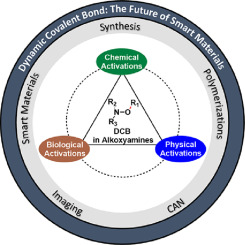В журнале Progress in Polymer Science (IF 27,1) опубликован обзор с участием д.ф.-м.н., проф. Е.С. Багрянской (директор Института, завлаб ЛМР):
Dynamic Covalent Bond: Modes of Activation of the C—ON Bond in Alkoxyamines
Gérard Audran, Elena G. Bagryanskaya, Raphaël Bikanga, Michelle L. Coote, Olga Guselnikova, Chelsey L. Hammill, Sylvain R.A. Marque, Philippe Mellet, Pavel S. Postnikov
Progress in Polymer Science
Volume 144, September 2023, 101726

Abstract
The materials of future depend a lot on properties that are due to “non stable” molecules. Hence, Dynamic Covalent Bonds (DCB) are covalent bonds that are labile under specific stimuli and are integral to the design of next generation materials. Alkoxyamines R1R2NO—R3 exhibit a unique C—O DCB that is nonsymmetric between the adjacent O- and C-atoms. This bond can be cleaved homolytically, heterolytically and mesolytically in response to a wide variety of physical, chemical and biological stimuli, and the kinetics and thermodynamics of cleavage can be tuned on-demand by varying the structure of R1, R2 and R3. Alkoxyamines are easily incorporated into polymers via nitroxide mediated polymerisation (NMP) however, their dynamic covalent properties are yet to be fully exploited in materials sciences. This is in part because reports on C—ON activation are scattered through the broader synthetic, physical and biological chemistry literature, and a comprehensive review of them has been lacking. Herein, 20 leading C—ON activation processes using UV-light, surface plasmon resonance, magnetothermy, electrochemistry, chemical oxidation, protonation, non-covalent bonding, sonication, enzymatic activation among others, are presented and discussed, along with primary examples of their application.
Альметрики:

